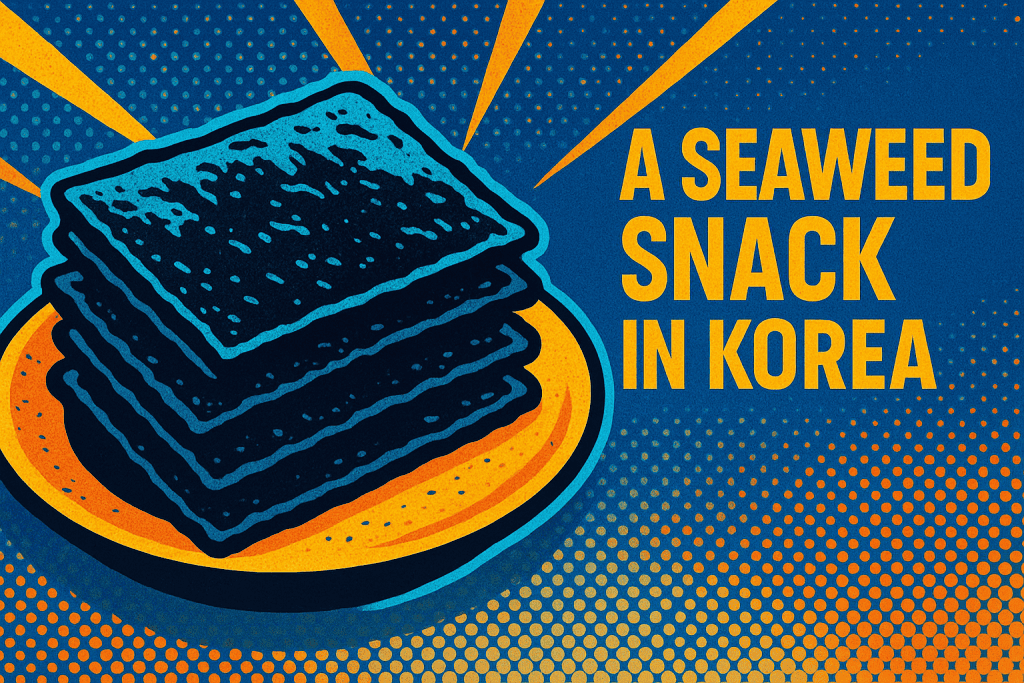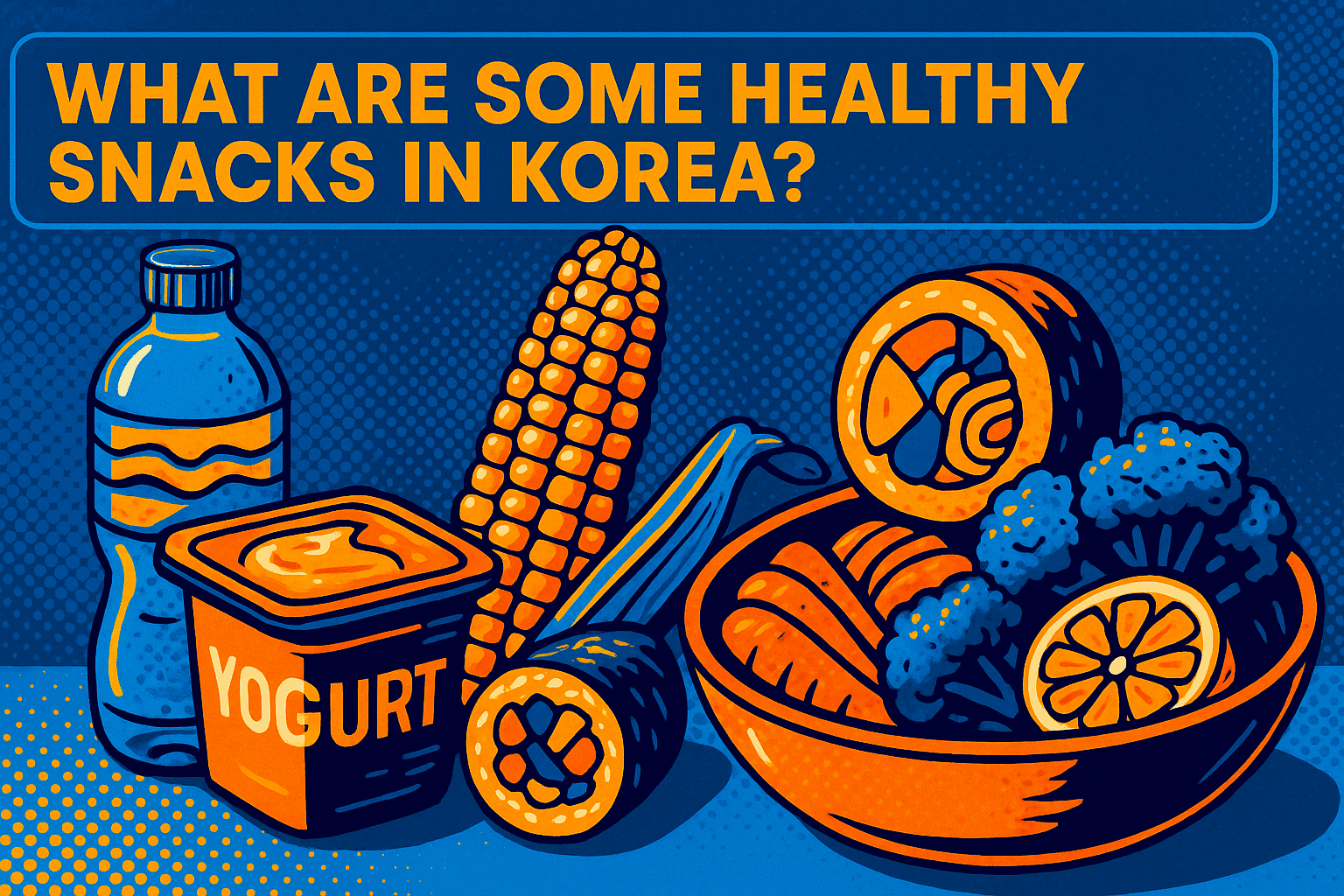Korean cuisine is celebrated worldwide for its bold flavors, nutritious balance, and innovative twists on traditional food. Among its many culinary offerings, healthy snacks hold a special place, blending cultural heritage with modern health-conscious choices. This review dives into what are some healthy snacks in Korea, exploring their unique qualities and why they stand out in the global snack scene. From roasted seaweed to sweet potato chips, these snacks offer both convenience and nourishment. The significance of this topic in food and lifestyle lies in how it showcases Korea’s ability to adapt time-honored ingredients for modern tastes, while still supporting wellness. Whether you are a fan of K-dramas, K-pop, or simply interested in exploring global snacks, Korean healthy snacks offer an exciting world of flavors. This review evaluates their pros, cons, and comparisons to provide a well-rounded perspective.

Overview of What Are Some Healthy Snacks in Korea
When asking what are some healthy snacks in Korea, the list is surprisingly diverse. Koreans take everyday ingredients like seaweed, sweet potatoes, rice, and chestnuts and turn them into wholesome snack items. Roasted seaweed (gim) is a staple, often lightly salted and toasted for a savory, crispy bite. Baked sweet potato chips provide natural sweetness and fiber without heavy oils. Rice cakes (tteok) come in various forms, from chewy to crispy, with flavor of honey and grains. Nuts and dried fruits are also popular, offering a portable source of protein and energy. Modern Korean brands also embrace healthier options like protein bars, yogurt drinks, and kombucha, catering to younger, health-savvy consumers. This overview highlights how Korea balances tradition with innovation in its snack culture, making these foods not only delicious but also align with contemporary dietary trends.
Pros of Some Healthy Snacks
One of the biggest advantages of Korean healthy snacks is their reliance on natural ingredients. Seaweed, sweet potatoes, and chestnuts are minimally processed, preserving their nutritional value. They are also portion-friendly, meaning most servings are designed to be light yet filling. Another positive point is variety; when considering what are some healthy snacks in Korea, the range spans savory, sweet, crunchy, and chewy, appealing to different taste preferences. Many snacks are gluten-free, vegan-friendly, and suitable for clean eating lifestyles. Korean packaging is also practical, often designed for easy portability, making it convenient for students, office workers, or travelers. Additionally, the cultural influence of wellness trends in Korea means snacks often avoid excessive sugar or artificial flavors if you compare it to Western alternatives. The pros extend beyond taste—these snacks are socially tied to gatherings, family traditions, and K-drama-inspired habits, giving them both cultural and nutritional relevance.
Cons of Some Healthy Snacks
Despite their many strengths, Korean healthy snacks also provide drawbacks. First, international availability can be limited. While big cities often stock them in Asian markets, smaller regions may struggle to access authentic products. Another challenge lies in price—compared to mainstream Western snacks, Korean options can be more expensive due to import costs. Some varieties, like rice cakes, may contain added sugar or preservatives when mass-produced, slightly undermining their health appeal. Additionally, when exploring what are some healthy snacks in Korea, portion sizes can sometimes be misleading. While marketed as healthy, overconsumption of even nutritious snacks like sweet potato chips or nuts can lead to excess calorie intake. Some snacks, especially seaweed, may also contain higher sodium levels. Finally, cultural unfamiliarity may deter new consumers who are hesitant to try flavors like kimchi-flavored chips or barley tea, despite their health benefits.
In-Depth Analysis
Design
The packaging design of Korean snacks is often sleek, colorful, and culturally inspired. Minimalist graphics and portion-controlled packs make them visually appealing and practical.
Functionality
When asking what are some healthy snacks in Korea, functionality is key. Seaweed sheets are easy to pack for school lunches, while sweet potato chips work well as office pick-me-ups.
Taste & Nutrition
Most snacks strike a balance between taste and health. Seaweed provides umami flavor while being low in calories. Sweet potato chips and roasted chestnuts offer natural sweetness without refined sugar. Rice cakes supply energy but can sometimes feel too heavy for those not used to their texture.
Accessibility
Domestically, these snacks are everywhere in Korea—from convenience stores to street vendors. However, outside of Korea, accessibility remains an issue, though online platforms are making it easier for global fans to buy them.
Cultural Appeal
A unique point is how these snacks tie into Korean culture. Eating roasted sweet potatoes in winter or rice cakes during festivals connects food to memory and tradition. These emotional links make the snacks more than just health foods—they become cultural icons.

Comparison
When comparing what are some healthy snacks in Korea to Western counterparts, key differences emerge. Korean snacks tend to focus on natural ingredients and lighter seasoning, while Western snacks often lean heavily on salt, sugar, or oil.
| Snack Type | Korean Version | Western Counterpart | Key Differences |
|---|---|---|---|
| Crispy snack | Roasted seaweed | Potato chips | Similar texture, but seaweed is lower in calories and fat. |
| Root vegetable chips | Baked sweet potato chips | Fried potato chips | Korean versions are usually baked, making them lighter and healthier. |
| Quick energy snack | Rice cakes | Granola bars | Both provide quick energy, but rice cakes are tied to cultural rituals. |
| Seasoning style | Simple, light seasoning | Heavier use of salt, sugar, oil | Korean snacks focus on natural ingredients; Western snacks lean on strong flavors. |
| Regional comparison | Korean snacks (simplicity, health focus) | Japanese snacks (complex flavor) | Korean emphasize simplicity, Japanese lean toward complexity, both highlight balance. |
| Global influence | Popularized through K-dramas and K-pop | — | Korean snacks are trendy and appealing internationally due to cultural exports. |
Conclusion
In conclusion, reviewing what are some healthy snacks in Korea reveals a unique blend of culture, nutrition, and innovation. These snacks showcase how Korea integrates health-conscious habits into everyday eating without sacrificing taste or cultural identity. While accessibility and price remain challenges for international fans, the pros far outweigh the cons.
Rating
★★★★☆ (4.5/5)
Korean healthy snacks excel in taste, nutrition, and cultural charm, though accessibility and price prevent a perfect score.
FAQ
What are some traditional healthy snacks in Korea?
Traditional healthy snacks in Korea include roasted seaweed (gim), baked sweet potatoes, rice cakes (tteok), roasted chestnuts, and dried fruits. These foods rely on natural ingredients and minimal processing.
Are Korean healthy snacks better than Western snacks?
Korean snacks often emphasize lighter seasoning and natural flavors. For example, roasted seaweed is lower in calories and fat compared to potato chips, and baked sweet potato chips are healthier than fried Western versions. Rice cakes also offer cultural value beyond nutrition.
What are the downsides of Korean healthy snacks?
Some downsides include limited international availability, higher costs due to imports, and occasional added sugar or preservatives in mass-produced snacks. Portion sizes can also be misleading, and certain options like seaweed may contain higher sodium levels.
Why are Korean healthy snacks popular globally?
Their popularity is driven by K-dramas, K-pop, and Korean cultural exports. These snacks combine taste, nutrition, and cultural appeal, making them trendy while also offering healthier alternatives to typical global snacks.
Resources
Resources
- Maangchi – Korean Snacks Recipes
- Korea.net – Traditional Korean Food
- H Mart – Korean Snacks Online Store
- Healthline – Seaweed: The Healthy Korean Snack
- Korea Tourism Organization – Korean Food Guide

